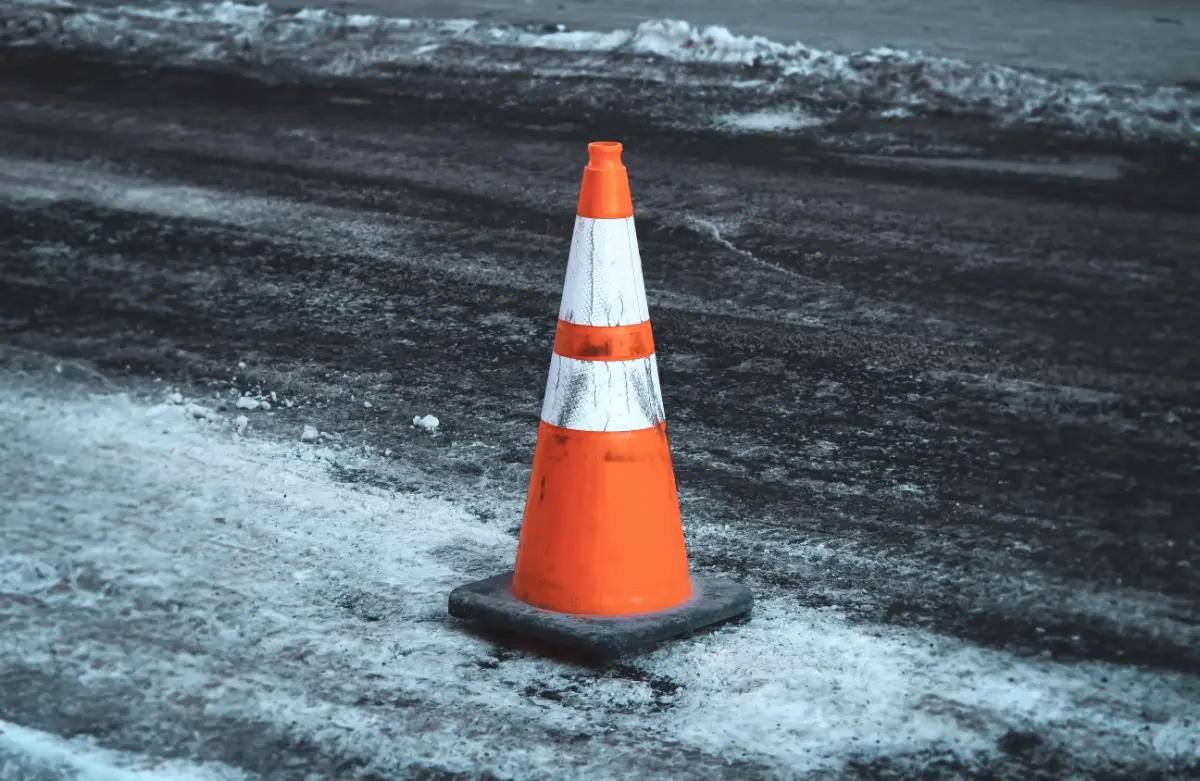When Were Traffic Cones Invented?
Are you wondering when traffic cones were invented? Learn about the fascinating history of traffic cones with this helpful article!

If you’ve ever been out on the open road and wondered where all of these signs and signals on the road came from, then you’re not alone.
There’s a long, fascinating history of transportation that has led us to our modern world filled with colors and shapes, but one of the simplest tools of the road, the traffic cone, has one of the most fascinating histories of all.
So who invented traffic cones and when were they implemented?
Modern traffic cones were invented by Charles D. Scanlon, an American who saw the imperfections in using wooden tripods to indicate changes in traffic flow and designed the modern traffic cone to bounce back when struck.
There’s a lot of history behind why a new design for a traffic cone was needed and how the invention of the modern traffic cone came alongside a bunch of other highway safety inventions.
The rest of this article will discuss the history of the traffic cone and how it was implemented into American society.
History of the First Traffic Cone
Before the advent of the plastic traffic cone, the original traffic cones were made from concrete, with the model for their design being invented in the United Kingdom in 1914.
Due to the obvious problems with having a hard-to-see, extremely dense concrete block popping up in the road while driving, the Brits swapped out the design for pyramid-shaped wooden cones, which, despite being perhaps less visible, wouldn’t prove to be quite as hazardous to drivers.
A street painter by trade, Charles D. Scanlon noticed an issue with these wooden tripods that were then used to mark roads. They were clunky, easily damaged, not visible, and posed a hazard to drivers.
In response to these imperfections, he designed a rubber ‘witch’s hat’ template that was designed to remain upright when struck by a passing car. His patent was approved in 1943, and traffic cones would soon see use across the country to manage traffic.
The original purpose of the first rubber traffic cone made from tire scraps was to help drivers steer clear of wet paint, and the cone itself was weighted at the bottom to allow it to remain upright even when struck with a glancing blow.
Across the pond, the United Kingdom holds the honor of putting the first experimental plastic traffic cones to use, thereby replacing wooden cones.
They were used during construction on the Preston Bypass in 1961. Most traffic cones today are outfitted with a reflective collar that makes them more visible to drivers from a longer distance.
Modern Traffic Cones
As traffic cones have become standardized, you’ll notice that almost all highway traffic cones look exactly the same. That’s because the standard dictates that they have to be predominantly orange, at least 18 inches tall, and have a reflective collar.
Today, traffic cones are the universal symbol of construction, with many being used to mark off areas that are being worked on for driver and worker safety.
A lot of construction vehicles will put two cones to the side of the vehicle when the vehicle is parked at the side of the road to indicate its presence to oncoming drivers, signaling for them to be aware that there may be workers present.
In addition, traffic cones don’t just have their place on the highway. Nowadays, you can also find them indoors, marking off sections of the floor that are wet and therefore dangerous.
Conclusion
Traffic cones are a common sight nowadays, seeing use all across the world in a variety of cases. Whenever we spot a traffic cone, it’s usually warning us of upcoming construction and a change in the road.
These cones, with their distinct orange design and reflective color weren’t always so visible. The first traffic cones were made from concrete in 1914, posing a tremendous hazard to drivers. Later, both in the U.S. and UK, they would be replaced with painted wooden pyramid-shaped cones.
The problem with these, however, was that they were easily broken and still not readily visible to drivers, making conditions hazardous for both workers and vehicles.
Unimpressed by these wooden tripods, Scanlon took it upon himself to patent the upright, conical shape that we know today, earning his patent in 1943; however, it wasn’t until 1961 that our modern plastic traffic cone, with it’s orange coloring and white reflective collar, would make its way on the Preston Bypass to warn oncoming traffic of construction ahead.
Today, traffic cones are used everywhere and are part of the core driving experience―even though nobody enjoy traveling through construction zones.
The good thing is that, despite how frustrated we may be when we see a sea of traffic cones directing us away from where we want to go, at least the cones are helping to keep the workers safe.

